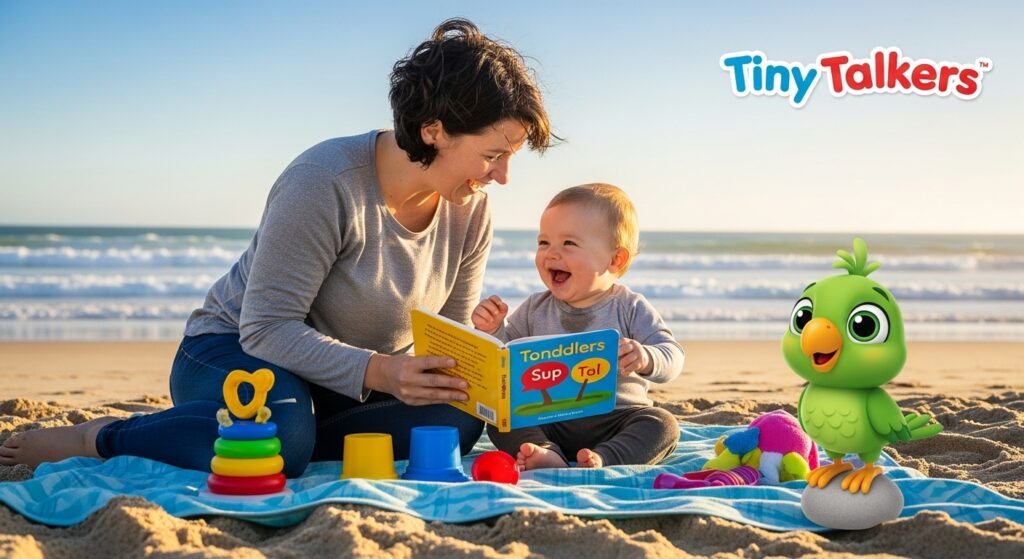Understanding the Basics
As parents, witnessing your child’s first words is one of the most heartwarming experiences. But what happens when those words don’t come as expected? It’s natural to worry about speech and language development. Understanding the differences between a speech delay and a language delay can help you provide the best possible support for your toddler.
What is a Speech Delay?
A speech delay refers to difficulties with the physical act of speaking. This might mean a child has trouble forming the correct sounds or pronouncing words clearly. Here are some key points to consider:
- Pronunciation Struggles: Children with speech delays might mispronounce words, making it difficult for others to understand them.
- Sound Formation Issues: They might also have trouble forming certain sounds correctly, which can affect their ability to communicate effectively.
- Speech Clarity: This might involve unclear speech where others find it hard to understand the child’s attempts to converse.
Understanding Language Delay
Language delay, on the other hand, involves challenges with understanding or using words in context. It’s more about the content and meaning behind the words, rather than the ability to articulate them. Here’s what to watch for:
- Understanding Challenges: Kids with language delays may struggle with comprehension or following directions.
- Expressive Language: These children might find it hard to express their thoughts and ideas using language.
- Limited Vocabulary: A language delay often involves a smaller vocabulary or difficulty combining words into sentences.
Key Differences
Understanding the distinction between speech and language delays is crucial. While speech is about the physical ability to produce sounds, language is about how we use those sounds to communicate meaning. Here’s a closer look at the differences:
- Speech Delay:
- Focuses on articulation and speech sound production.
- May involve issues like stuttering or difficulty with specific sounds.
-
Generally identified by difficulty in producing words clearly.
-
Language Delay:
- Involves difficulties in understanding or using language.
- May present as trouble with sentence formation or following instructions.
- Can be expressive (trouble using language) or receptive (trouble understanding language).
Signs to Look For
Identifying the signs early can help in seeking appropriate intervention. Observing your toddler’s communication can give you clues about whether they might be experiencing a speech or language delay.
Common Signs of Speech Delay
- Difficulty pronouncing words correctly.
- Omitting consonants at the beginning or end of words.
- Limited use of consistent sound patterns.
- Frustration when trying to communicate verbally.
Common Signs of Language Delay
- Limited vocabulary for their age.
- Difficulty forming sentences.
- Challenges in understanding and following simple instructions.
- Struggles with social aspects of communication, like taking turns in conversation.
Causes and Risk Factors
Several factors can contribute to speech and language delays. Recognizing these can help in understanding your child’s specific needs.
- Hearing Loss: Undiagnosed hearing issues can impact a child’s ability to learn and produce speech sounds accurately.
- Developmental Disorders: Conditions like autism spectrum disorder can affect language development.
- Family History: A family history of speech or language delays can increase the likelihood.
- Environmental Factors: Limited exposure to language or lack of social interaction can contribute to delays.
Seeking Professional Help
If you suspect your child has a speech or language delay, it’s important to consult with a professional. Speech-language pathologists are trained to assess and provide targeted interventions that can make a significant difference.
Steps to Take
- Consult Your Pediatrician: They can provide initial advice and refer you to a specialist.
- Schedule an Evaluation: A speech-language pathologist will assess your child’s communication abilities.
- Follow Through with Recommendations: Early intervention can be key in addressing delays effectively.
Supporting Your Child at Home
In addition to professional help, there are many ways you can support your child’s speech and language development at home:
- Engage in Conversation: Talk with your child throughout the day about what you’re doing, seeing, or planning.
- Read Together: Books are a fantastic way to introduce new vocabulary and language structures.
- Play Interactive Games: Games that encourage turn-taking and following instructions can be beneficial.
- Model Clear Speech: Speak clearly and slowly to provide a good model of language.
Conclusion
Navigating the complexities of speech and language development can feel daunting, but understanding the differences between a speech and language delay is an empowering first step. Remember, every child develops at their own pace, and seeking guidance from professionals can help tailor support to your child’s unique needs. With patience, love, and the right resources, you can nurture your toddler’s communication skills and help them build confidence in expressing themselves. Embrace this journey with optimism, knowing that you’re providing the best foundation for your child’s future success in communication.

